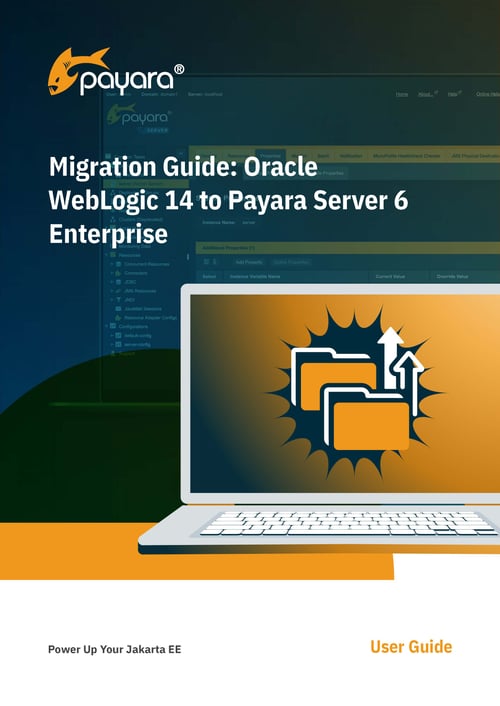Posts tagged Payara Server (2)
The Payara Monthly Catch - January 2025
Published on 29 Jan 2025
by Nastasija Trajanova
Topics:
Java EE,
Payara Micro,
Microservices,
JakartaEE,
Payara Server,
New Releases,
Payara Events,
Payara Enterprise,
Payara Community,
Payara Cloud
|
0 Comments
The Payara Monthly Catch - December 2024
Published on 31 Dec 2024
by Nastasija Trajanova
Topics:
Java EE,
Payara Micro,
Microservices,
JakartaEE,
Payara Server,
New Releases,
Payara Events,
Payara Enterprise,
Payara Community,
Payara Cloud
|
0 Comments
The Payara Monthly Catch - November 2024
Published on 28 Nov 2024
by Chiara Civardi
Topics:
Java EE,
Payara Micro,
Microservices,
JakartaEE,
Payara Server,
New Releases,
Payara Events,
Payara Enterprise,
Payara Community,
Payara Cloud
|
0 Comments
Welcome aboard the November edition of the Payara Monthly Catch, bringing you the latest news and insights on Jakarta EE, MicroProfile, application development, DevOps and much more! This month's resources focus on the theme of how to build modern, secure and resilient Jakarta EE applications. To this end, we’re bringing you insights on everything from modernizing legacy Java applications to embracing observability and fault tolerance to keep your systems running smoothly as well as how you can leverage Jakarta EE 11 to power up your applications.
The Payara Monthly Catch - October 2024
Published on 30 Oct 2024
by Chiara Civardi
Topics:
Java EE,
Payara Micro,
Microservices,
JakartaEE,
Payara Server,
New Releases,
Payara Events,
Payara Enterprise,
Payara Community,
Payara Cloud
|
0 Comments
The Payara Monthly Catch - September 2024
Published on 30 Sep 2024
by Chiara Civardi
Topics:
Java EE,
Payara Micro,
Microservices,
JakartaEE,
Payara Server,
New Releases,
Payara Events,
Payara Enterprise,
Payara Community,
Payara Cloud
|
0 Comments
Ahoy crew! Welcome aboard the September edition of Payara’s Monthly Catch! As we chart our course toward the final quarter of the year, we’ve got a boatload of exciting updates, news and highlights from the Payara community and beyond. Here's our brief overview of must-read guides, in-depth tutorials, technical insights, and expert advice from September that will help you elevate your software development and deployment for enterprise Java applications!
The Payara Monthly Catch - August 2024
Published on 29 Aug 2024
by Chiara Civardi
Topics:
Java EE,
Payara Micro,
Microservices,
JakartaEE,
Payara Server,
New Releases,
Payara Events,
Payara Enterprise,
Payara Community,
Payara Cloud
|
0 Comments
Summer didn't stop our experts at Payara from producing meaningful content to help software developers and DevOps specialists power up their Jakarta EE applications. As August ends, we curated the top highlights from the month for you to check as you get back to your desk.
Focusing on Jakarta EE 11, cloud computing, microservices, application server migrations and more, this monthly catch is treasure trove of valuable content, brimming with must-read guides, in-depth tutorials, technical insights, and expert advice that will help you elevate your software development and deployment projects. Don’t miss out on these essential resources—dive in and discover the knowledge you need to succeed!
The Payara Monthly Catch - July 2024
Published on 31 Jul 2024
by Chiara Civardi
Topics:
Java EE,
Payara Micro,
Microservices,
JakartaEE,
Payara Server,
New Releases,
Payara Events,
Payara Enterprise,
Payara Community,
Payara Cloud
|
0 Comments
As August is about to unfold, we take some time to dive into the depths of Payara's resource base to gather for you the best pearls from July on Java, Jakarta EE, cloud computing, application development and devops. Our talented team has compiled an array of invaluable contributions designed to enhance your projects, meaning this month's roundup is packed with insightful guides, tutorials, technical insights and expert advice that you won't want to miss.
Fine Tuning Payara Server 6 in Production
Published on 24 Jul 2024
by Ramya Billapati
Topics:
Payara Server,
Java 11,
Java,
getting started with Jakarta EE,
Jakarta EE
|
1 Comment
Smooth Transition: Upgrading from WebLogic 14 to Payara Server 6
Published on 02 Jul 2024
by Chiara Civardi
Topics:
Payara Server,
Java,
Migration,
WebLogic,
Jakarta EE
|
0 Comments
To remain competitive in a marketplace where competition is fierce, businesses relying on software applications as part of their offering need robust, flexible and efficient application servers. These are key to maximizing the capabilities of their applications, addressing customer needs and maintaining a competitive edge.
The Payara Monthly Catch - June 2024
Published on 26 Jun 2024
by Chiara Civardi
Topics:
Java EE,
Payara Micro,
Microservices,
JakartaEE,
Payara Server,
New Releases,
Payara Events,
Payara Enterprise,
Payara Community,
Payara Cloud
|
0 Comments
As summer sails in, we’re navigating towards exciting new adventures. But before we start exploring what lies ahead, let's cast our nets and haul in the bounty of brilliant contributions and resources from the past month. Crafted by our talented crew to boost your Java and Jakarta EE projects, our latest roundup is brimming with pearls and gems that you won't want to miss, from sparkling tutorials to invaluable insights.


